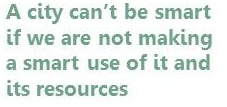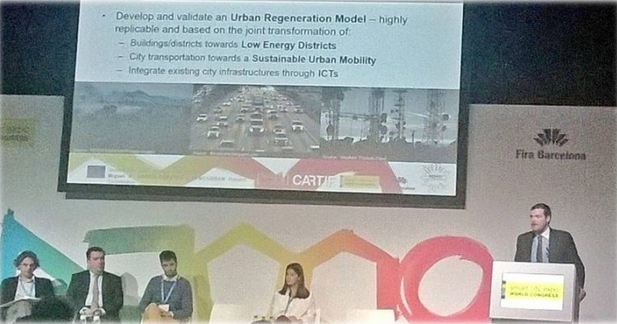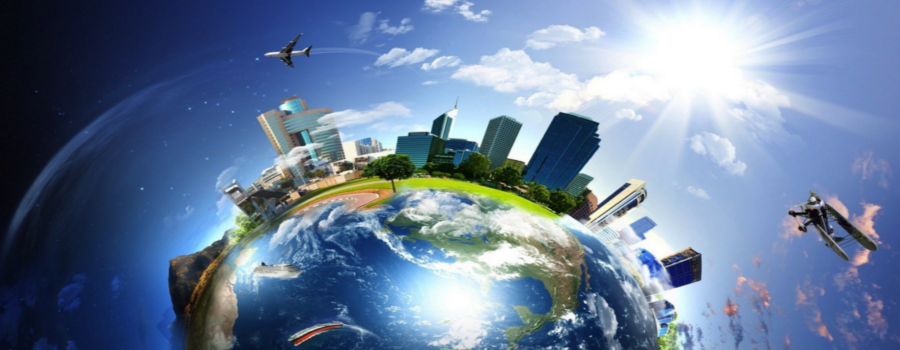“Cities are no more than ecosystems that consume resources and transform them to produce outputs as services, goods or waste” says Richard Rogers in his book “Cities for a Small Planet”. Certainly, sustainability of these complex ecosystems depends on our capability to reduce the non-renewable sources consumption, waste production or the various means of contamination (atmospheric, light or acoustic), as well as on establishing circular strategies that allow generating new resources based on the produced wastes.

On the other hand, the technology development (that happens mostly in cities) provokes that we have an increasingly important new resource, which is the information through data, generated by citizens and the systems they use. Perhaps this source was not considered in the Rogers’ ecosystem (or at least not as important as it is now) which he said that should be circular and therefore reduce its dependency on external sources and the production of wastes as output. But there is no doubt on that, under this new industrial revolution that we are witnessing, “data is the new oil” (as David Buckingham, President at AIMIA Shopper Insights, says), whose refinement, exploitation and transformation into services allows improving the citizens’ quality of life.
Coming back to Rogers’ text, in the prologue to the Spanish version, who was the Mayor of Barcelona between 1982 and 1997, Pasqual Maragall, wrote that “my city is imposed as an indisputable evidence, the environment of everything, or almost everything that happens to me, the greatest place among all I can modify, about which I can really influence, physically, and not only through the fiction of the vote”.
It is difficult to establish an accepted definition of what a Smart City is, and even more agreeing how to measure it, but it is indubitable that the basis of the city of the future has its ground on these three ingredients that Rogers, Buckingham and Maragall state, where if we mix them we find out that in the challenge of transforming the city –understanding that every action will have an impact on its performance–, we need to work on improving the efficiency of its ecosystem –making it more sustainable–, and integrating this important source which is data to provide to citizens new and improved services to turn their day-to-day more efficient as well. At the end, a city can’t be smart if we are not making a smart use of it and its resources.

Furthermore, undeniably, the Smart concept is trendy, and it is not only the city understanding that new mechanisms should be implemented to improve this ecosystem, but among the citizens, there is an increasing demand and use of smart technology solutions. Now, the challenge is on finding the balance among these two axes, which should converge on transforming the urban environment into a smarter and more sustainable place to live and work by agreeing those that plan it and those that are already making a smart use of sources and services.
Many of these concepts have been evident in the Smart City Expo and World Congress in Barcelona, which has been again postulated as main fora among cities, industry and citizens in this year’s edition, where all these stakeholders have gathered to learn under a Congress that this year was entitled “Cities for Citizens” which could not better summarise the ideas that this post try to share.
This was a “must” event for our Smart City projects, where we have been able to share the urban regeneration processes that we are implementing in the 16 cities in which our projects R2CITIES, CITyFiED, REMOURBAN and mySMARTLife are working, through actions in the convergence area of energy efficiency, smart and sustainable mobility and ICTs that we are implementing.
- Yes, you should put the blame on REMOURBAN - 29 August 2018
- ‘New old’ buildings: retrofitting and efficiency - 14 September 2017
- Smart Cities for an increasingly smaller planet - 5 December 2016

